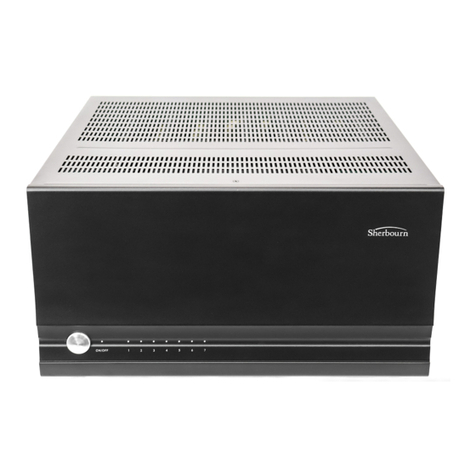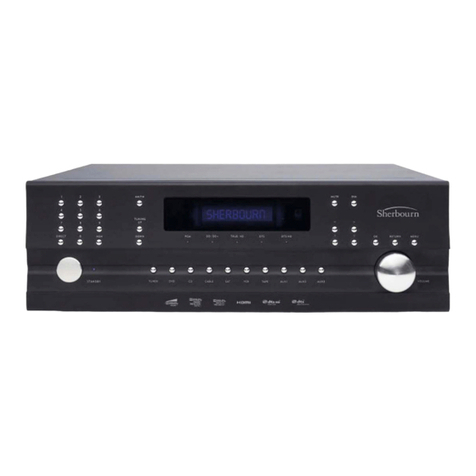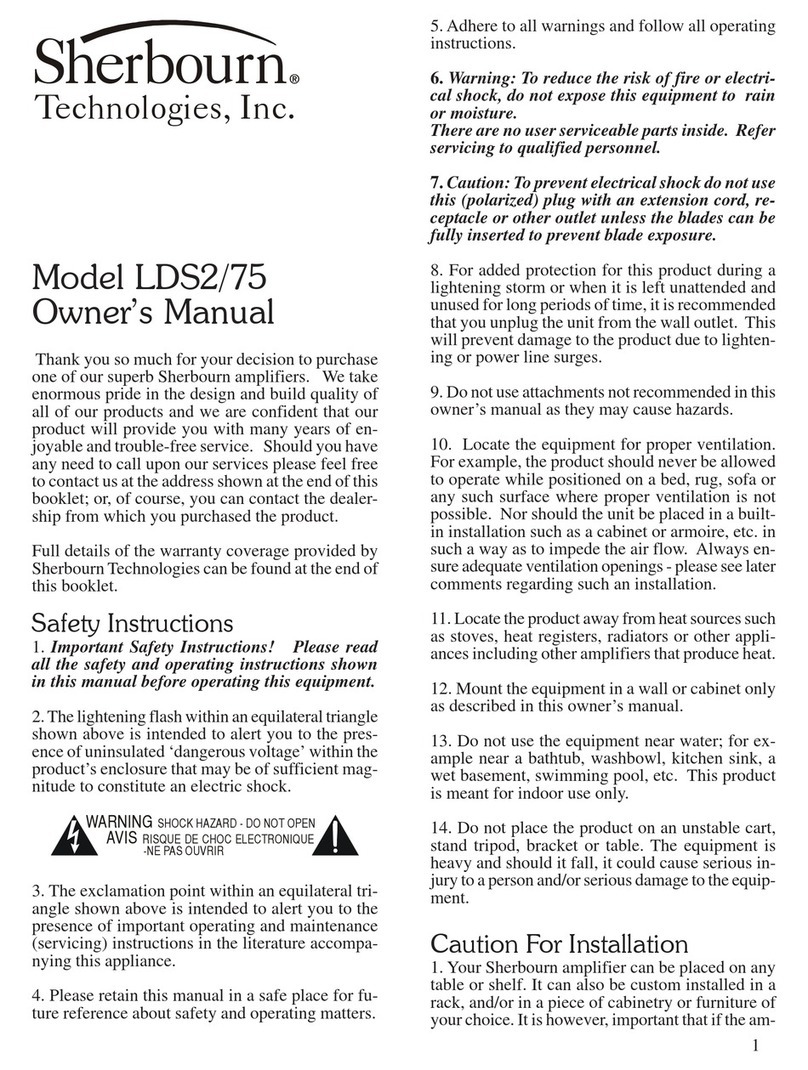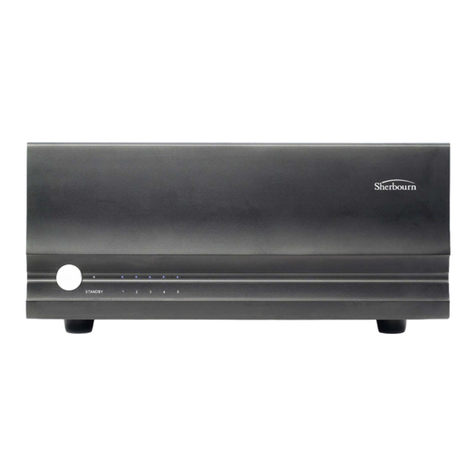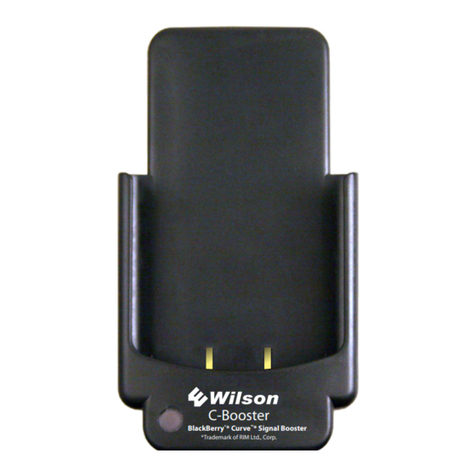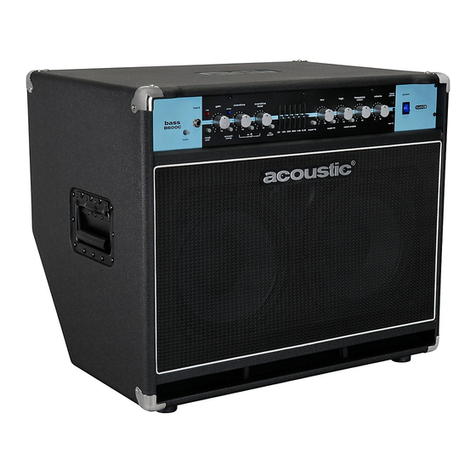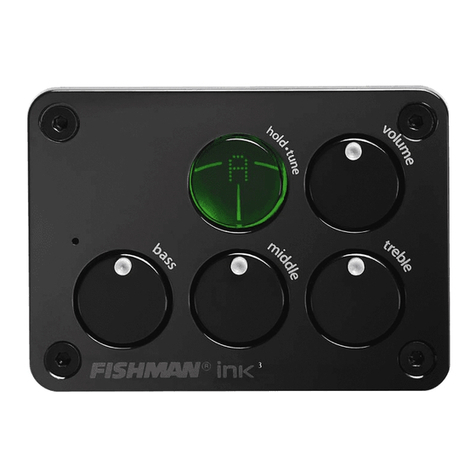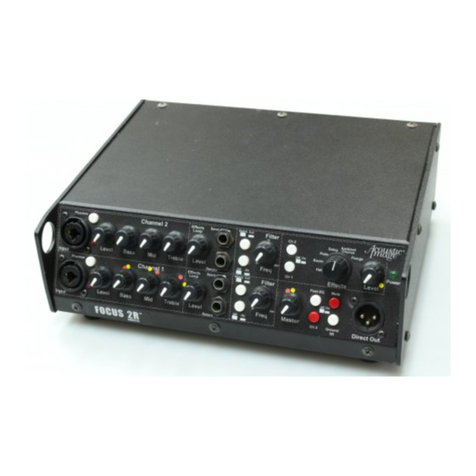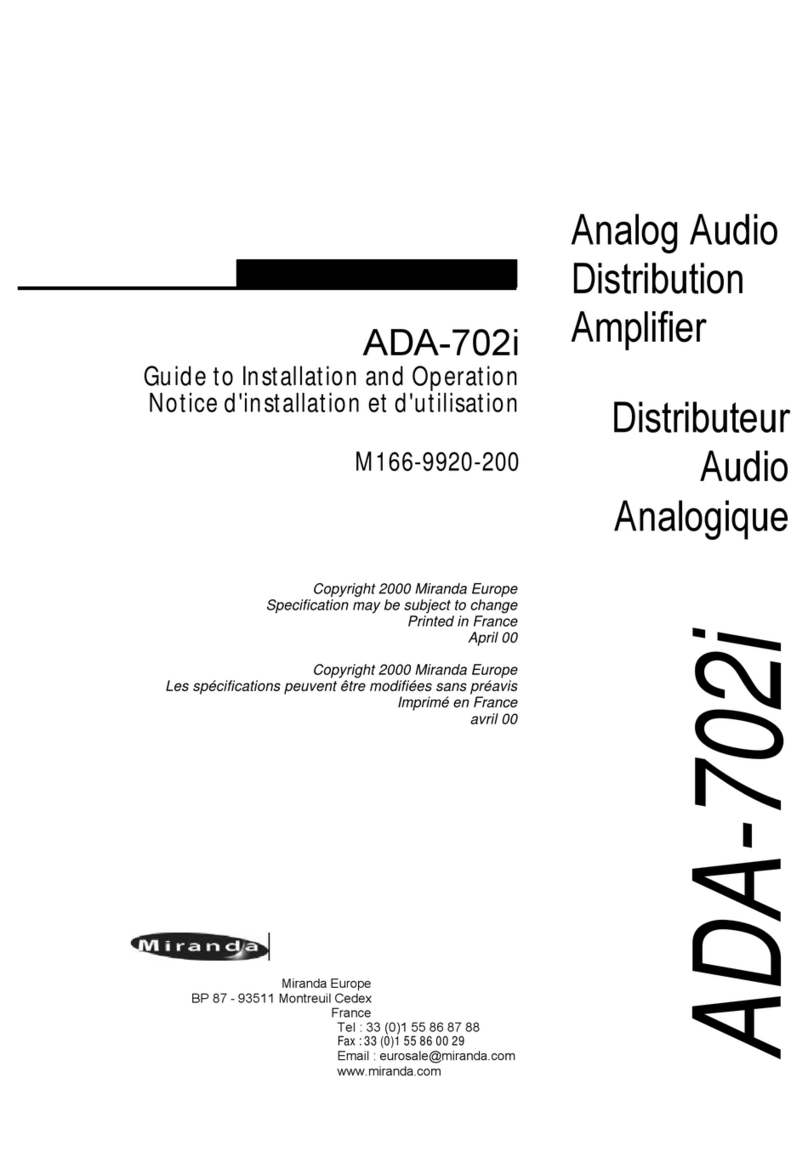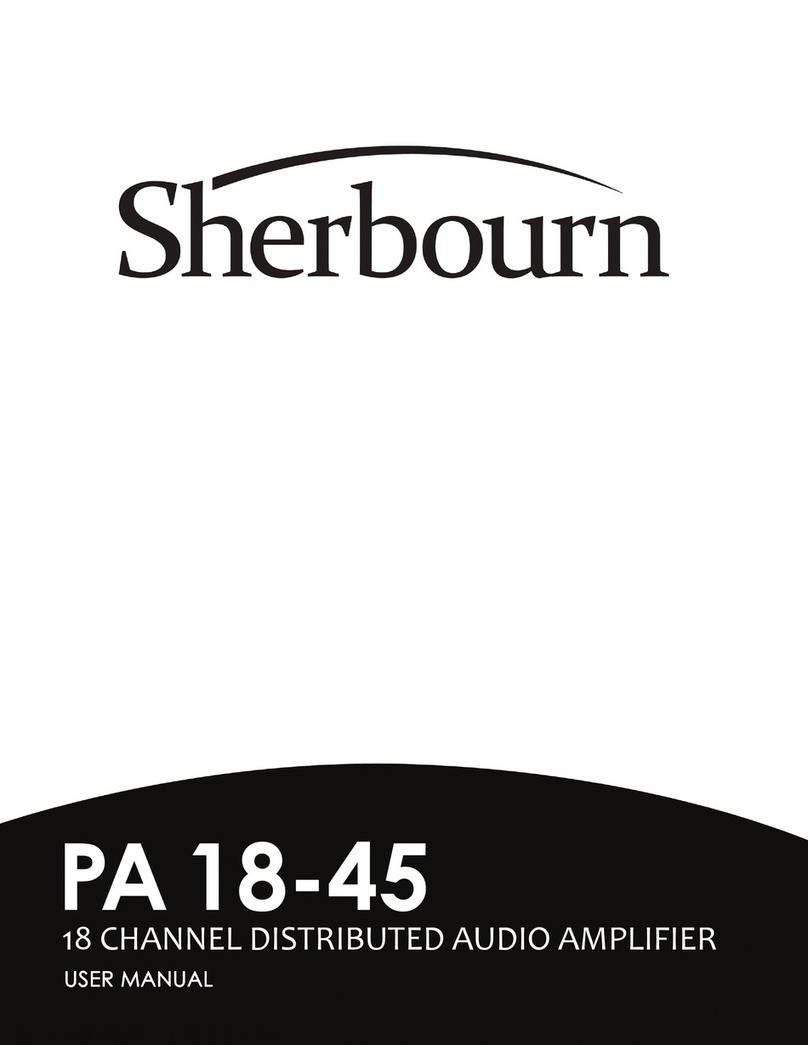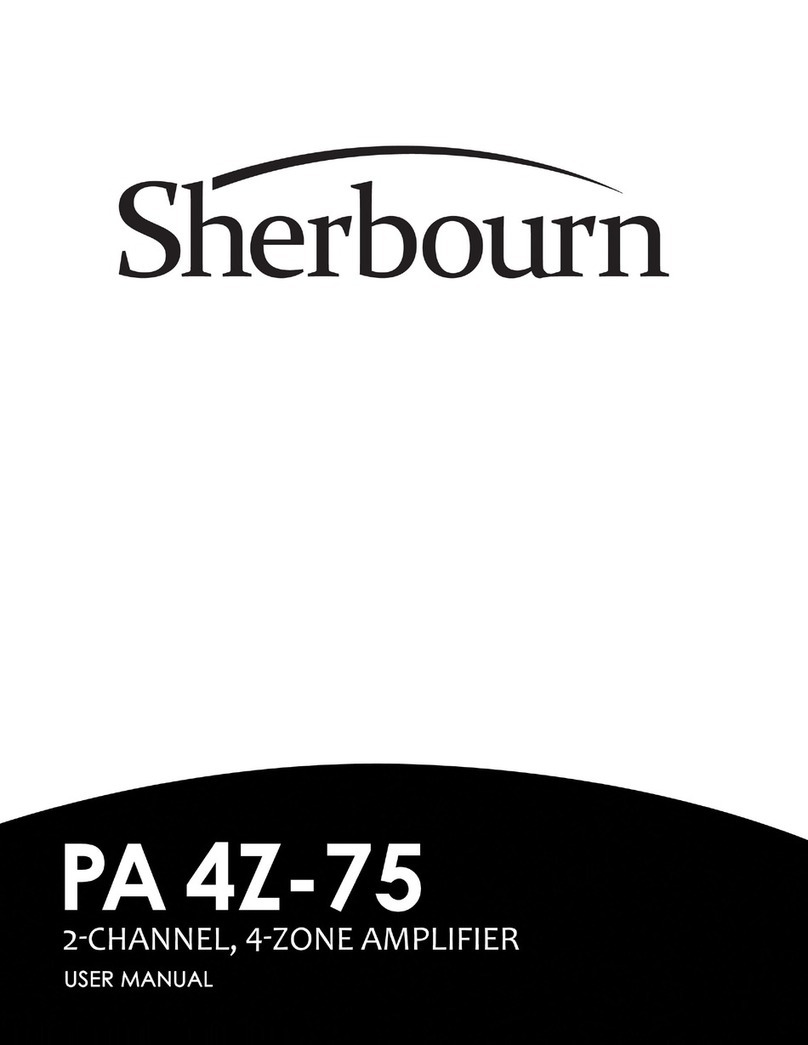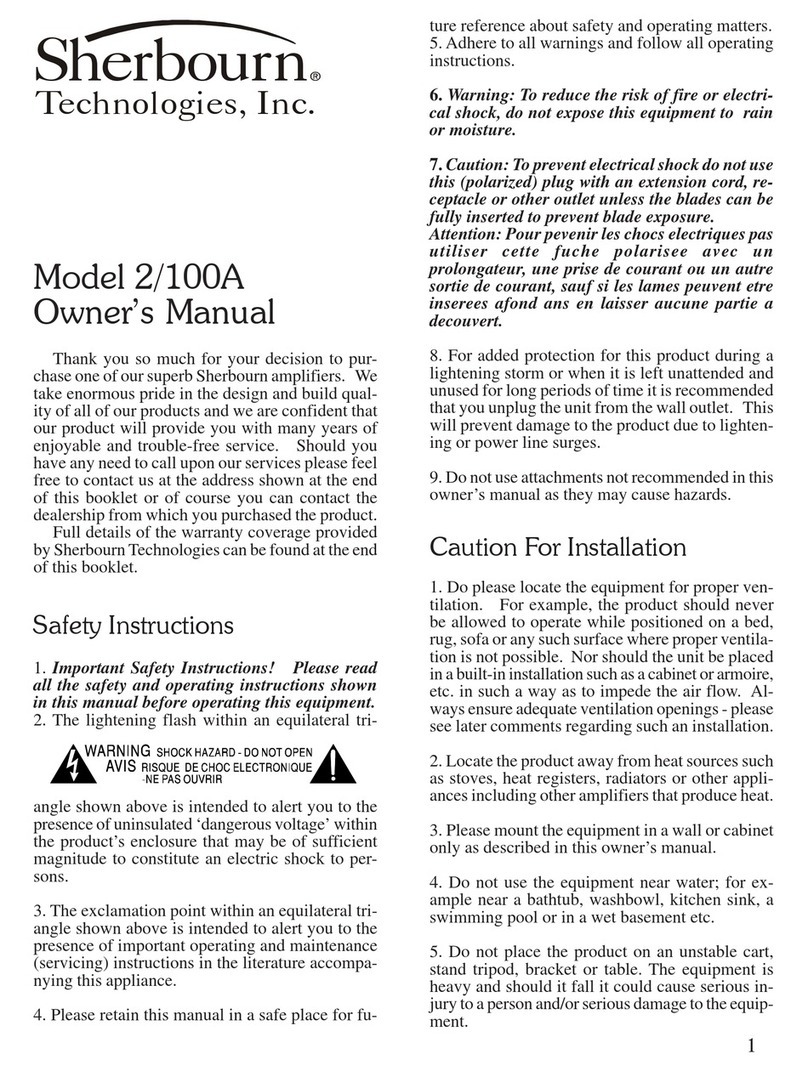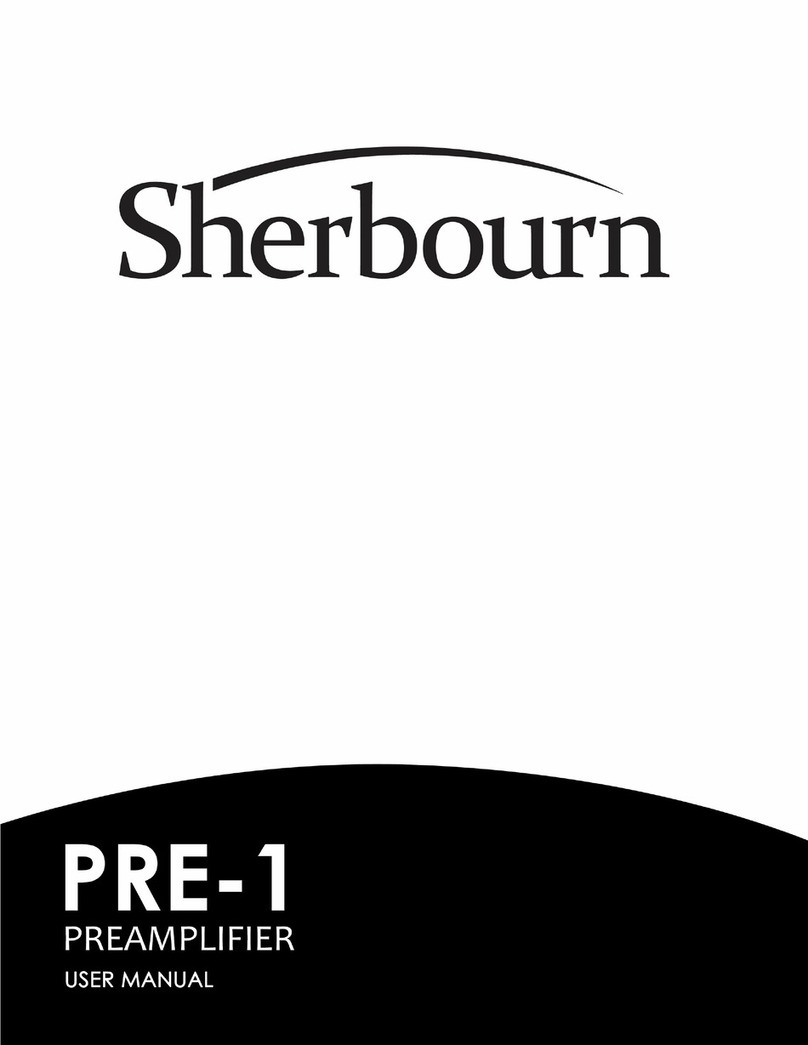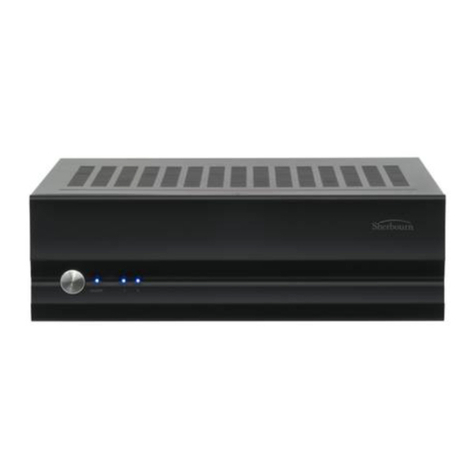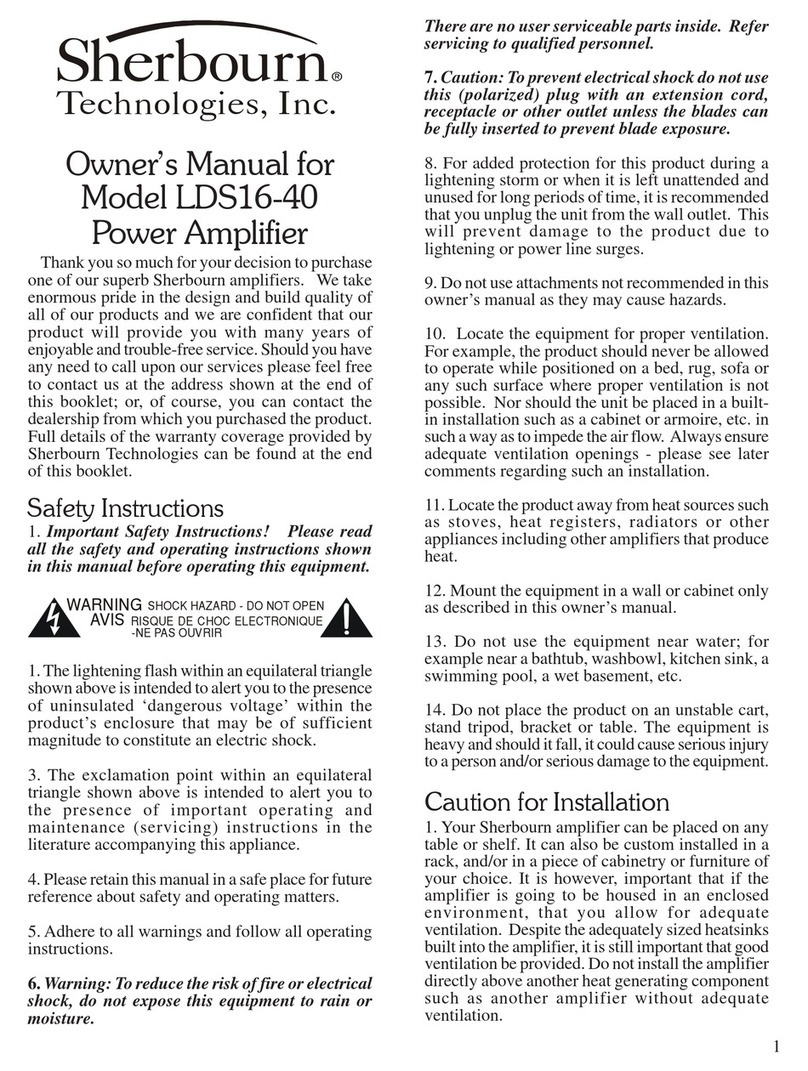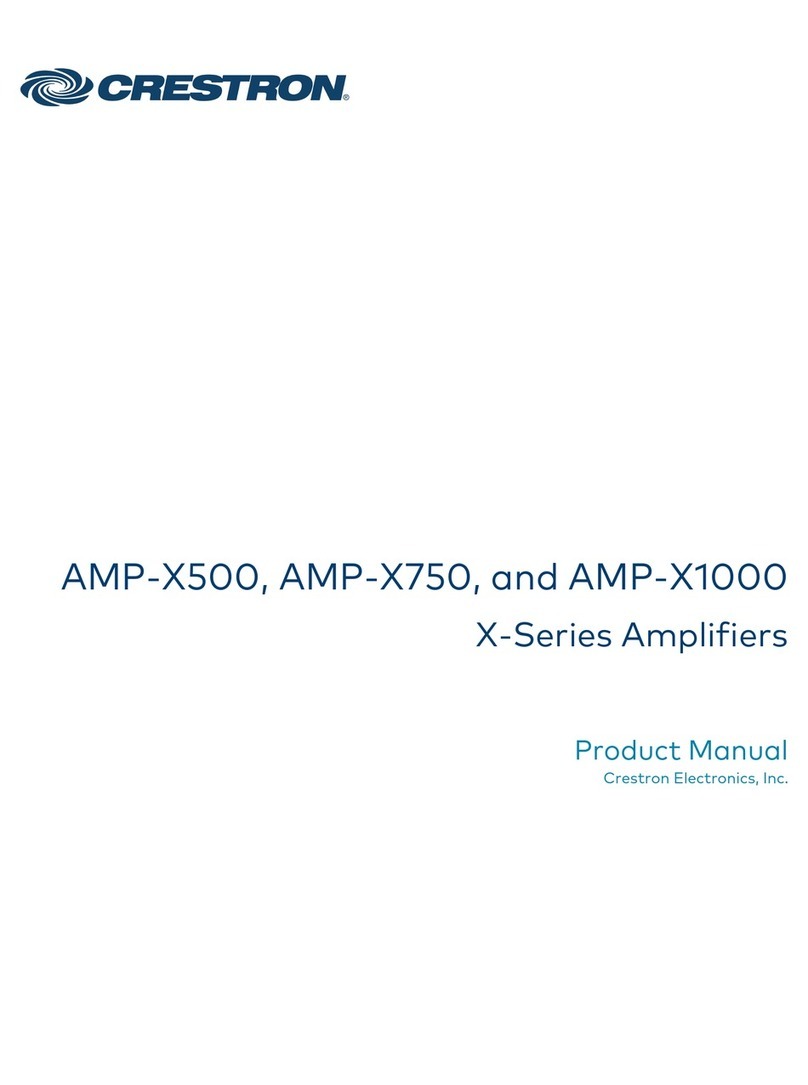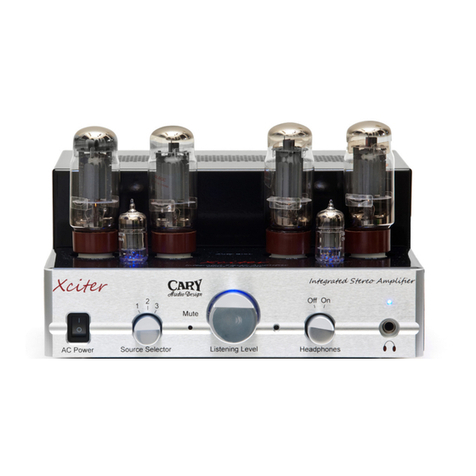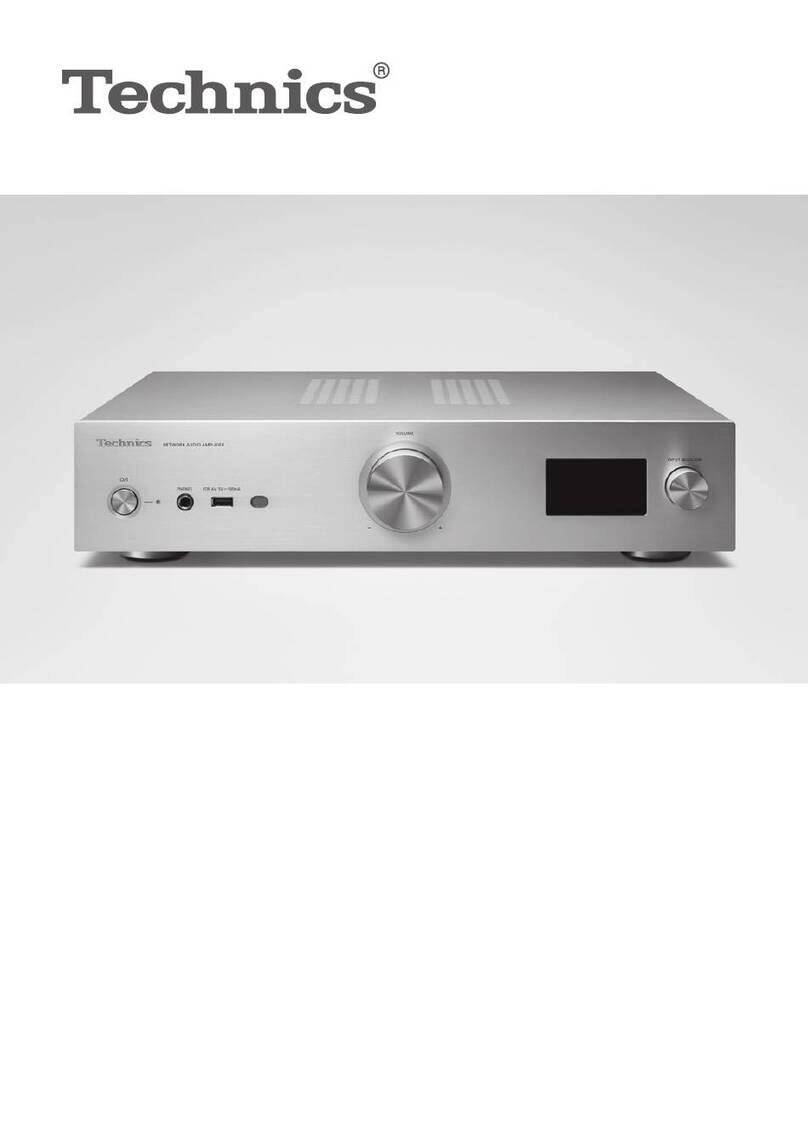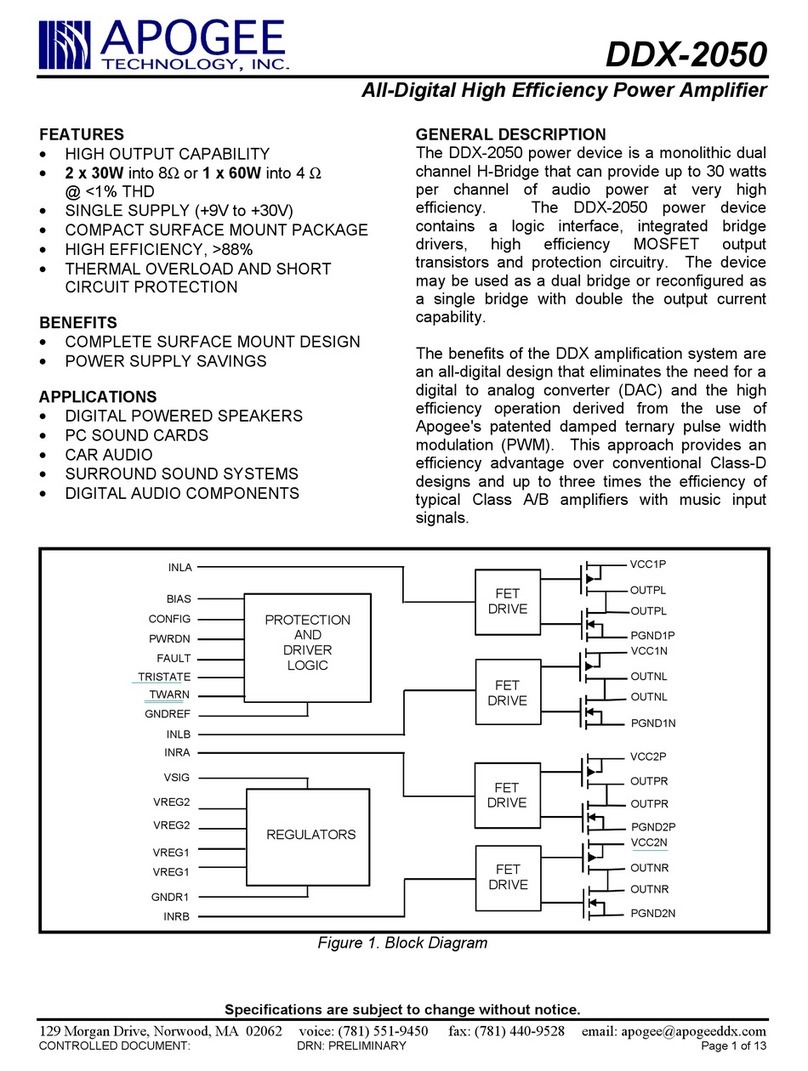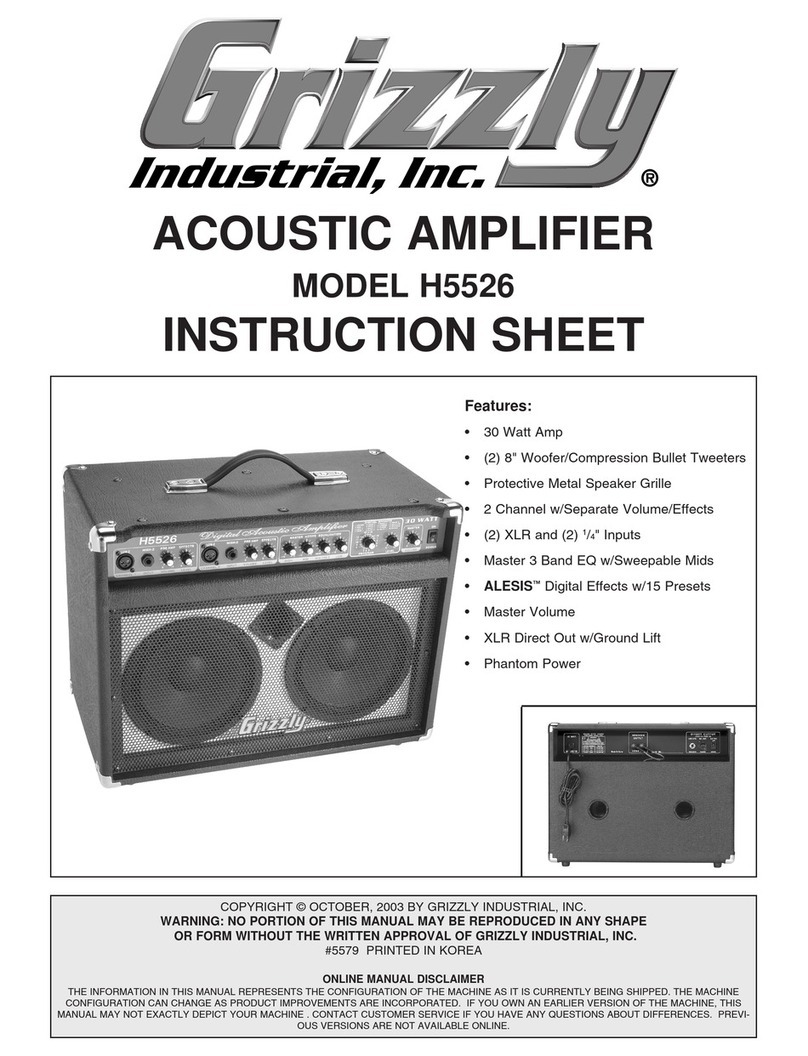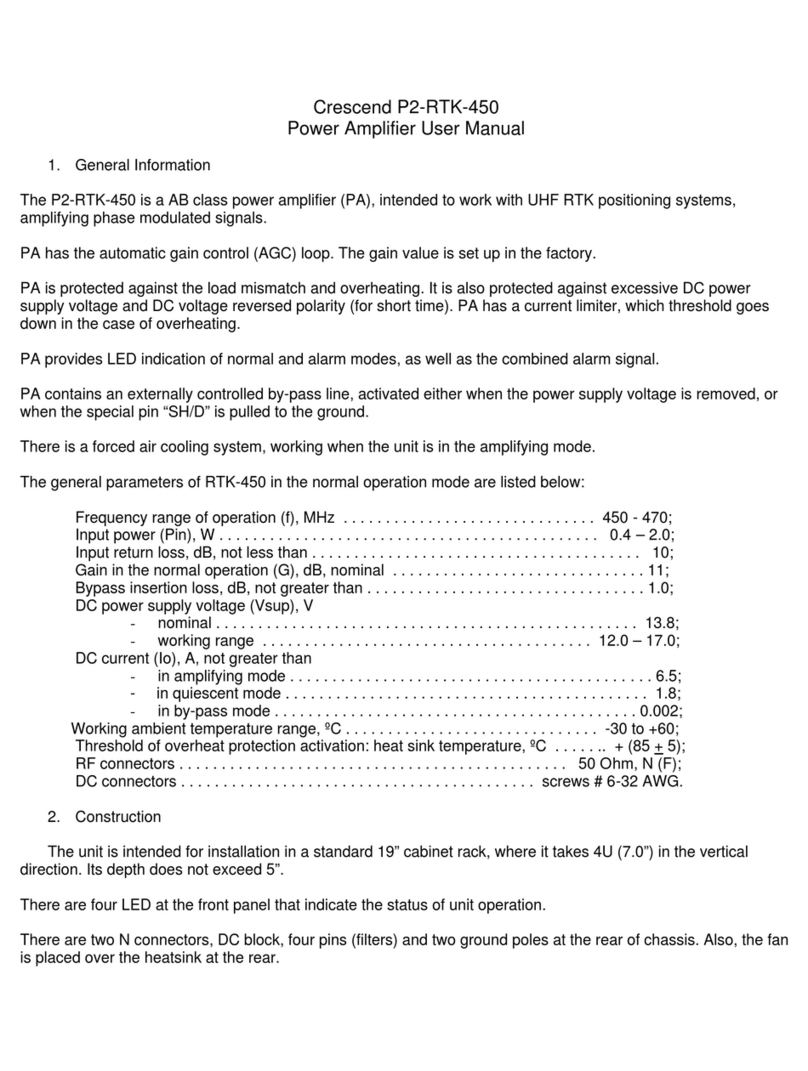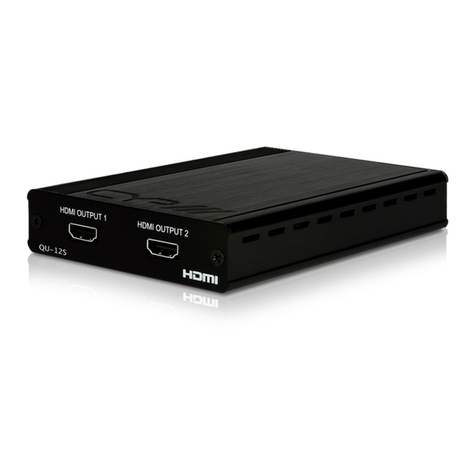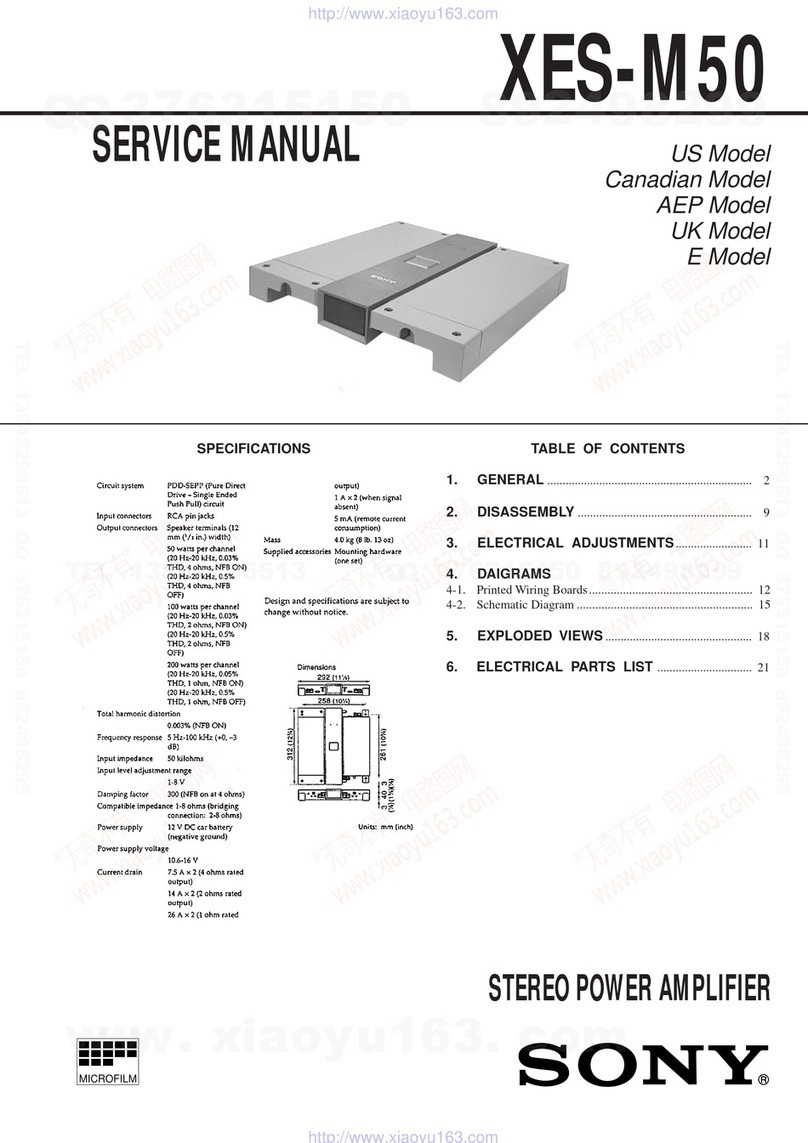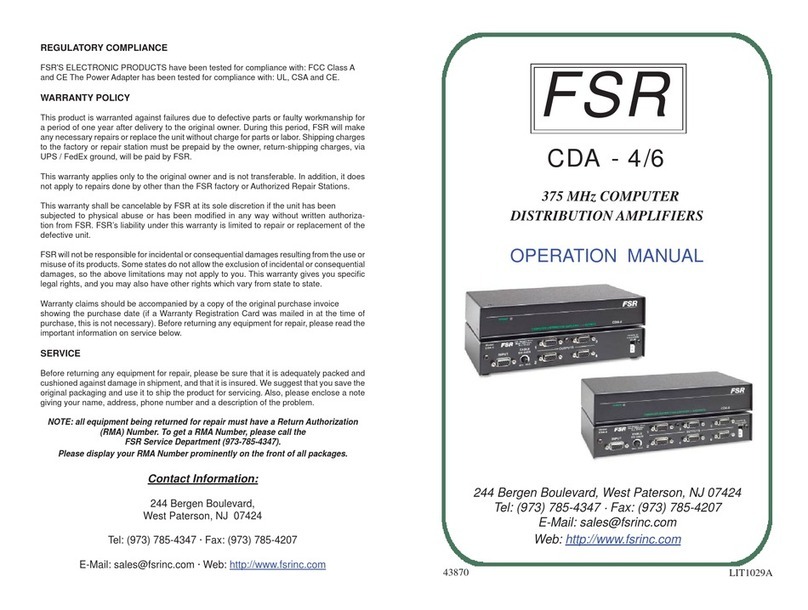
Installation and Connections
AC Power Considerations
The majority of household electrical sockets (in places
other than the kitchen and garage) are 15 amperes maxim-
um, which is sufficient to power your Sher ourn amplifi-
er. However, remem er to account for the electrical power
that other components will require if they share a common
wall socket or electrical circuit. Most DVD players,
preamplifiers and A/V source units are fairly low current
items, and can successfully share a wall socket with your
power amplifier, ut ig screen TVs and video projectors
usually have minimum current requirements that can con-
sume nearly an entire circuit. Refer to the owner’s manu-
als of your audio/video devices to assess your electrical
power requirements for your home entertainment system.
If you have any questions relating to issues with the power
requirements for your Sher ourn amplifier, please contact
Sher ourn Support at: 978-663-7385.
Surge Protection - Along with uilt-in noise filtering,
your Sher ourn amplifier is equipped with overcurrent,
undercurrent, and spike protection.
Upon powering up your Sher ourn amplifier with the
front panel switch or via 3.5mm trigger input (switch on
the rear panel must e set to “ON”), you will notice the
front panel LED lighting starts off red for 5 seconds and
then turns to lue. This indicates the amplifier is “ON,”
functioning normally, and ready for operation. If you do
not see an LED light or a linking red LED light while the
amplifier is on during (otherwise) normal operation,
please refer to the trou leshooting section of this manual.
Physical Placement /Heat Considerations
Sher ourn series amplifiers employ convection cooling,
which is very effective and completely noiseless. Under
normal operating conditions, your Sher ourn amplifier
will remain cool to mildly warm, ut considerations for
heat should e taken into account during placement.
Place your Sher ourn amplifier on a flat, level surface,
with the weight distri uted equally on all four feet. If us-
ing a ca inet or shelf, please make sure that there is suffi-
cient ventilation and there is at least 6 inches of free air
space a ove the amplifier and 3 inches on each side. If ad-
equate ventilation is not availa le, your may consider in-
stalling two small rushless DC fans (such as those used
in computer cases) to provide continuous airflow around
the unit. If the amplifier is located on a carpeted surface,
place a oard under the amplifier’s feet.
Do NOT block the ventilation holes on the amplifier.
Your Sher ourn amplifier is equipped with a massive tor-
oidal power transformer. This transformer generates a
magnetic field that could induce a hum in a turnta le (par-
ticularly a turnta le equipped with a moving coil cart-
ridge). Do NOT place a turnta le directly a ove or dir-
ectly adjacent to the amplifier.
Before placing the amplifier on a shelf, verify that the
weight earing capacity of the shelf is 80 l s or greater.
The amplifier is heavy and should e placed toward the
ottom of an audio rack to minimize the rack eing unne-
cessarily top heavy.
Input Connection Considerations
High quality, fully shielded RCA ca les are recommen-
ded for use with Sher ourn amplifiers. ‘Twisted Pair’
ca les are not recommended. Sher ourn amplifiers have
an extremely high andwidth, and twisted, non-shielded
ca les can actually act as an ‘antenna’, receiving outside
interference and signals (EMI and RFI), which will cause
the amplifier to go into protect mode.
Whenever possi le, keep preamplifier level audio ca les
away from amplifier electrical power cords y at least a
few inches. Amplifier AC power cords are carrying much
more current than other source and preamplifier compon-
ents, which means there is a larger degree of noise or
“hum” potential with the amplifier power cord in close
proximity.
Output Connection Considerations
The output connectors provided on each channel of Sher-
ourn amplifiers are standard “ inding post” speaker con-
nectors with industry standard spacing. These are some-
times called 5-way inding posts ecause of the many
ways in which the speaker wire can connect into the posts.
The posts can accept are wire, spade terminals, and dual
or single anana connectors. Spade connections or anana
plugs ensure a simple, solid fit in the terminal whereas
are wire may e awkward when the terminal is screwed
down to compress the wire into place. Keep in mind that if
you use “dual anana” plugs and “stack” them, you will
e creating a parallel connection. For more details on
series and parallel connections, see pages 13-14.
It is important to o serve polarity so that the speaker wire
connects to the red and lack terminals on the amplifier
and the corresponding terminals at the speaker. Also, make
sure that the positive speaker wires do not touch the negat-
ive speaker wires, or any chassis metal. This will cause a
short circuit and activate the protection circuitry.
Connection Tips for Superior Sound
Before setting up your new system, please consider the
following:
•Always make sure the amplifier is turned off efore
making or changing ANY connections.
•Whenever possi le, route the power cords away from
the signal ca les or speaker wires to prevent any hum
9

















